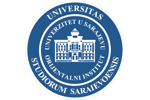Syncretical Elements in Islam in Bosnia and Herzegovina
Abstract
After having accepted Islam, brought by Turks on Balkan, Islamized Bosnians incorporated into it many elements of their earlier beliefs and rites, primarily from their Slavic religion, but also from Bogomilism and other cults which had had some influence in their country. In spite of many efforts, through centuries, to eradicate, in the religious sphere, everything that is not strictly Islamic, especially from the beliefs of Bosnian Muslims, the success was not complete.
Discussing about the existence of the continuity of rites on the same places before and after the Islamization, the author cites, as the most typical; the example of an ancient hypogeum, in fact a room built in a rock near the Čengićs' castle in Rataj near Foča, with an inscription in Bosnian alphabet. It was used by Bogomils and after the islamization converted to the teqiya and a mosque was built near it. He mentions many other places (hills, ancient graveyards, sources, caves, lakes, churches) which served as cultic places before and after Islamization. In continuity with the paganish cult of the mountains, a locality on the top of the mountain Visočica was named Džamija (mosque), on Treskavica a locality was named Ćabenske stijene (Kaaba's rocks), on Konjuh a locality Dovište (the place for pray), on the top of Trebević Sofe (the name of the part of the mosque near the entrance).
The continuity with pre-islamic cults is manifested by the existence of certain localities where the people prayed for the rain on determined Tuesdays after Jurjevo (the 6th of May). Almost always one can find a medieval necropolis near these places. They were probably places of same rites before the Islamization. The author stresses that the adherents of the Bosnian Church used to pray on graveyards and probably continued these prays after the Islamization.
Some Slavic deities persisted in Bosnian Islam tili the Second World War. The author especially discusses the cult of the old Scandinavian god Tur (Thorr), accepted by Slaves.
He discusses the holidays too. Some of them, apparently Christian, might originate from the pre-Christian times (e. g. Ilindan, Jurjev, Božić, Vidovdan, Spasovdan).
In the discussion about the religious traditions from Bogomilism the author mentions the cult of Paraklet, metempsychosis, appreciation of the New Testament, the magic, and the same elements of medieval sepulchral monuments and oldest nishans (Muslims' tombstones).
Because of the conversion to Islam of some Orthodoxes and Catholics the author mentions their religious relics. It is important that some Muslims went to Christian cultic places and asker for some religious help from the Christian priests.



